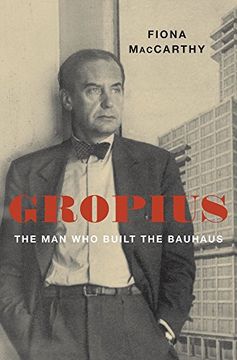Synopsis "Gropius: The man who Built the Bauhaus (in English)"
"This is an absolute triumph--ideas, lives, and the dramas of the twentieth century are woven together in a feat of storytelling. A masterpiece."--Edmund de Waal, ceramic artist and author of The White Road The impact of Walter Gropius can be measured in his buildings--Fagus Factory, Bauhaus Dessau, Pan Am--but no less in his students. I. M. Pei, Paul Rudolph, Anni Albers, Philip Johnson, Fumihiko Maki: countless masters were once disciples at the Bauhaus in Berlin and at Harvard. Between 1910 and 1930, Gropius was at the center of European modernism and avant-garde society glamor, only to be exiled to the antimodernist United Kingdom during the Nazi years. Later, under the democratizing influence of American universities, Gropius became an advocate of public art and cemented a starring role in twentieth-century architecture and design. Fiona MacCarthy challenges the image of Gropius as a doctrinaire architectural rationalist, bringing out the visionary philosophy and courage that carried him through a politically hostile age. Pilloried by Tom Wolfe as inventor of the monolithic high-rise, Gropius is better remembered as inventor of a form of art education that influenced schools worldwide. He viewed argument as intrinsic to creativity. Unusually for one in his position, Gropius encouraged women's artistic endeavors and sought equal romantic partners. Though a traveler in elite circles, he objected to the cloistering of beauty as "a special privilege for the aesthetically initiated." Gropius offers a poignant and personal story--and a fascinating reexamination of the urges that drove European and American modernism.

